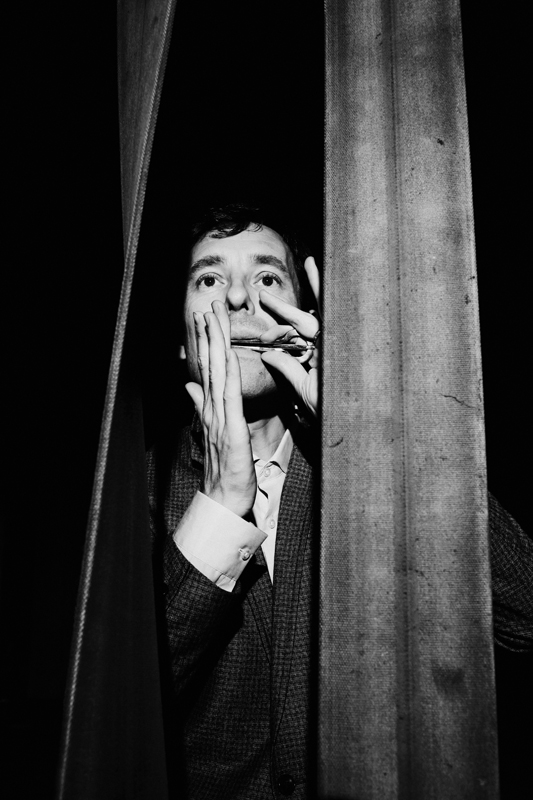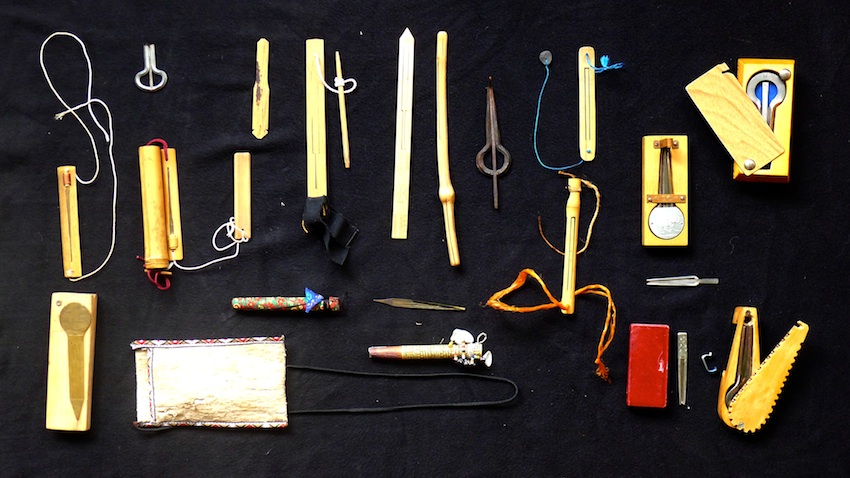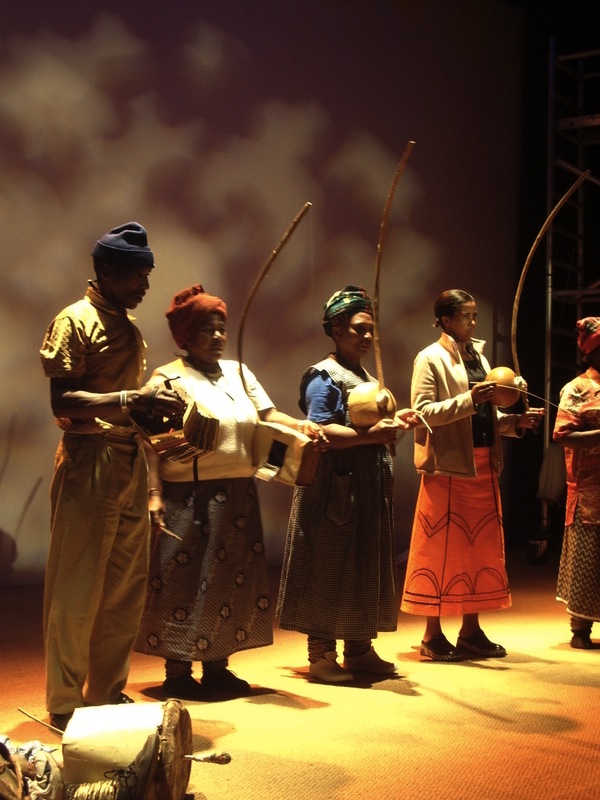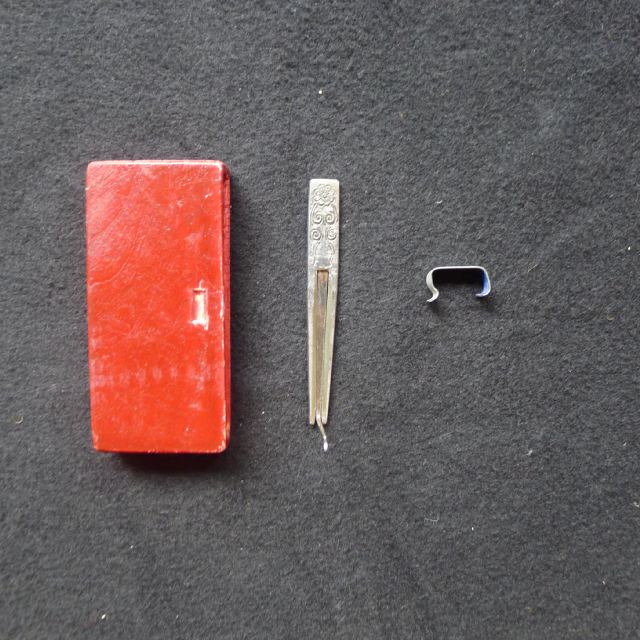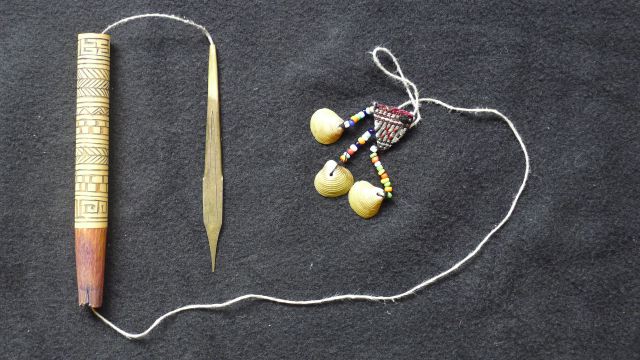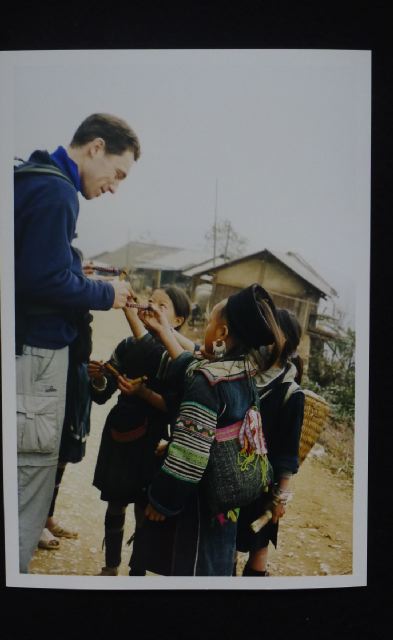Een jaar geleden (op 1 augustus 2016) overleed VPRO programmamaker Walter Slosse, met wie ik vele programma’s maakte, vooral in de jaren negentig. Een week ervoor hadden we een bijeenkomst in Amsterdam gehad van Walter en enkele van zijn/onze oude vrienden en radiogasten. Daarin kreeg ik de kans een test te doen van een presentatie die ik kort erna voor TedX Taipei zou geven. Ik kreeg er vele waardevolle tips van de aanwezigen, die hun weerslag ook kregen in de uiteindelijke TedX talk.
Bovenal werd het een dag waarin allerlei prachtige reis-, muziek- en andere verhalen opgerakeld werden. Het was bijzonder omdat sommige gasten elkaar wel kenden van de radio maar elkaar nog nooit in levende lijve hadden ontmoet; en ook omdat het een soort reünie was rondom Walter’s legendarische programma De Wandelende Tak, dat in de 23 jaar dat het bestond (van 1984-2007) een grote schare trouwe luisteraars unieke verhalen muziek voorschotelde.
En toen kwam slechts enkele dagen later totaal onverwacht het bericht dat hij op reis in Lübeck overleden was. Ik was op weg naar Siberië en was alleen nog in staat op afstand een laatste groet te brengen aan Walter, middels de nu volgende herinneringen, die ook tijdens de begrafenis op 9 augustus voorgelezen werden.
…..paaaroooooleeee…… paaaroooooleeeee……
en dan die prachtige, welbespraakte, Vlaamse stem die op schaarse momenten vrijwel non-stop trancemuziek van over de hele wereld onderbrak. Het programma Senza Parole (‘zonder woorden’) bezorgde mij hallucinerende radio-uren, ook zonder de paddo’s. Ik raakte voorgoed verknocht aan Marokkaanse gnawa en Dr. John The Nighttripper; aan Griekse miroloi, Moondog en Sufi-gezangen, welke zó lang duurden dat ze wel nooit meer integraal op de Nederlandse radio te horen zullen zijn; en ik raakte ook voorgoed verknocht aan Walter zelf.
Ik ontdekte De Wandelende Tak, Walter’s wekelijkse prime-time radioprogramma gewijd aan musici en reizigers uit alle uithoeken van de aarde. Wonderlijke, dramatische en ontroerende verhalen over reizen ver weg en dichtbij, met vaak ongehoorde en onbekende muziek. En altijd weer die fascinerende, gloedvolle stem.Mijn verzoek om meer informatie rond 1990 leidde tot een uitnodiging voor een bezoek aan de VPRO studio: de stem kreeg een gezicht, en er bleek een vrouw achter de schermen te zijn die evenzeer een drijvende kracht was achter de enorme productiviteit van De Wandelende Tak en andere programma’s. Walter Slosse en Magda van der Eecken leefden voor de radio, dat was duidelijk. Het waren gouden media-jaren (royale budgetten, en bijna alles mocht), en dankzij de tomeloze inzet en het alsmaar uitdijende netwerk van Walter en Magda stroomde er micro- en macrokredieten naar allerlei musici die anders nooit gehoord werden, tot ver buiten Nederland. Walter stak overal helpende handen toe en liep altijd over van nieuwe ideeën. Zo liet hij mij vorig jaar bij hem thuis een vernuftig zonnecellen-batterijpak zien dat hij in de jaren negentig regelde in Eindhoven, zodat Louis Sarno in het regenwoud maandenlang Pygmeeënliederen kon opnemen.
Een vroeg experimenteel model zonnepaneel dat Walter speciaal voor Louis Sarno bij Philips in Eindhoven regelde, zodat hij maandenlang het regenwoud in kon, onder andere om opnames van de Pygmeeën te maken.
Walter wist altijd een uitgebalanceerde koers te varen: hij gaf een stem aan onderdrukten, migranten en muzikale marginalen, maar dan zónder azijnsmaak, mét relativeringsvermogen en soms rake humor. Zijn dadendrang was gebaseerd op passie en overtuiging, en niet op één of ander post-koloniaal plichtsbesef. Hij bleef altijd op zoek naar de menselijke maat en had oog voor de breedst mogelijke context van muziek en cultuur.
Een sigaret losjes in de mond, nervositeit voor of tijdens de uitzending: het was ook duidelijk dat het wel degelijk een enorme inzet vergde om steeds weer met zoveel uiteenlopende programma’s, cd’s en concerten op de proppen te komen. Ik maakte me soms wel zorgen over de inspanningen die Walter leverde, maar het gesprek was eigenlijk nooit op hem zelf te brengen. Het ging over wat Walter om zich heen zag en hoorde, en wat hij vond dat er moest gebeuren.
Het afgelopen jaar viel mij aan niets te merken dat er iets mankeerde aan Walter: na een weerzien bij hem en zijn partner Eline thuis (zijn vrouw Magda van der Eecken overleed in februari 2012), hadden we regelmatig contact via Skype, blikten we terug en passeerden allerlei plannen de revue. Het leidde tot een door Walter en Heiko Jessayan georganiseerde bijeenkomst, nu slechts twee weken geleden: een geweldig weerzien van oude bekenden. Nog eenmaal kregen we de kans om deelgenoot te zijn van Walter’s aanstekelijke enthousiasme voor ongewone geluiden.
In maart van dit jaar publiceerde Walter een bericht over prachtige liederen uit de Catalaanse Llibre Vermell, uitgevoerd door Hesperion XX (‘Hesperion twintig’). Hij noemde het bericht Ad Mortem en haalt onder andere de volgende tekst aan:
Vita brevis breviter, in brevi finietur,mors venit velociter quae neminem veretur.
Life is short, and shortly it will end;
death arrives faster than anyone fears.
Dat te lezen is één ding. Dat te voelen is iets heel anders.
De pijnlijke boodschap van die tekst drong vorige week pas echt tot me door, terwijl ik de hele dag naar de uitvoeringen op jouw blog luisterde.
Senza parole, zonder jouw stem en persoon moeten we verder, maar je stem zal nog lang nagalmen in de digitale ether. In Siberië, waar ik dit schrijf, zal er vandaag ten afscheid een keelgezang rondgalmen door de taiga, langs de oevers van de Jenisei.
En hier is die ode aan Walter die ik vorig jaar zong in Erzhei, Toeva, tijdens de keelzangreis die ik maakte met Taiwanese studenten.
Uiteraard zijn er sinds zijn overlijden meerdere getuigenissen van Walter’s bijzondere journalistieke carrière verschenen. Enkele oude bekenden uit de ‘wereldmuziek’ haalden herinneringen op in een speciale uitzending van Fred Gales’ De Klankbron, tezamen met muziekfragmenten die ooit te horen waren in Walter’s De Wandelende Tak.
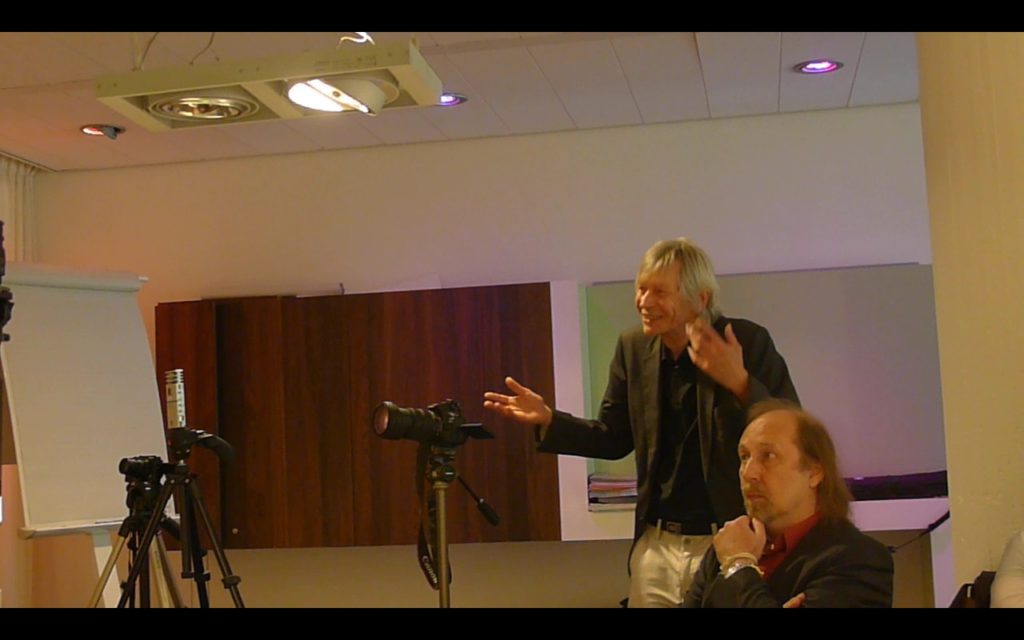
Walter Slosse (l) en Fred Gales tijdens de bijeenkomst, een week voor Walter’s dood.
Een andere oudgediende van de VPRO, Peter Flik, herinnerde zich een amusant voorval toen hij met Walter door een van muziek verlaten Leipzig reisde. Er dook ook een filmpje op, gemaakt door een voormalig student van een sociale academie, die Walter in 1978 in zijn bezemkast filmde, waar hij een complete radiostudio had geïnstalleerd. Hoe dat ging staat in een blogpost van Ronald van den Boogaard.
Nog altijd te lezen zijn het blog Websporen, met dichter Rob Van de Zande, het blog Reizen met Charly dat Walter samen met zijn partner Eline Robin maakte, en het blog Charley’s Blik, dat Eline nog regelmatig aanvult, en waarmee de geest van Walter levend blijft. Walter’s boeiende biografie is na te lezen op Walter Slosse’s Alfabet. Op dat blog zijn ook talloze uitzendingen terug te luisteren, verwerkt in journalistieke bijdragen die tientallen jaren van Walter’s radiocarrière bestrijken. Daaronder is een uitzending die ik voor Walter maakte in april 1996. Te zijner tijd zal ik hier nog wat andere uitzendingen die ik met Walter maakte aan toevoegen.




